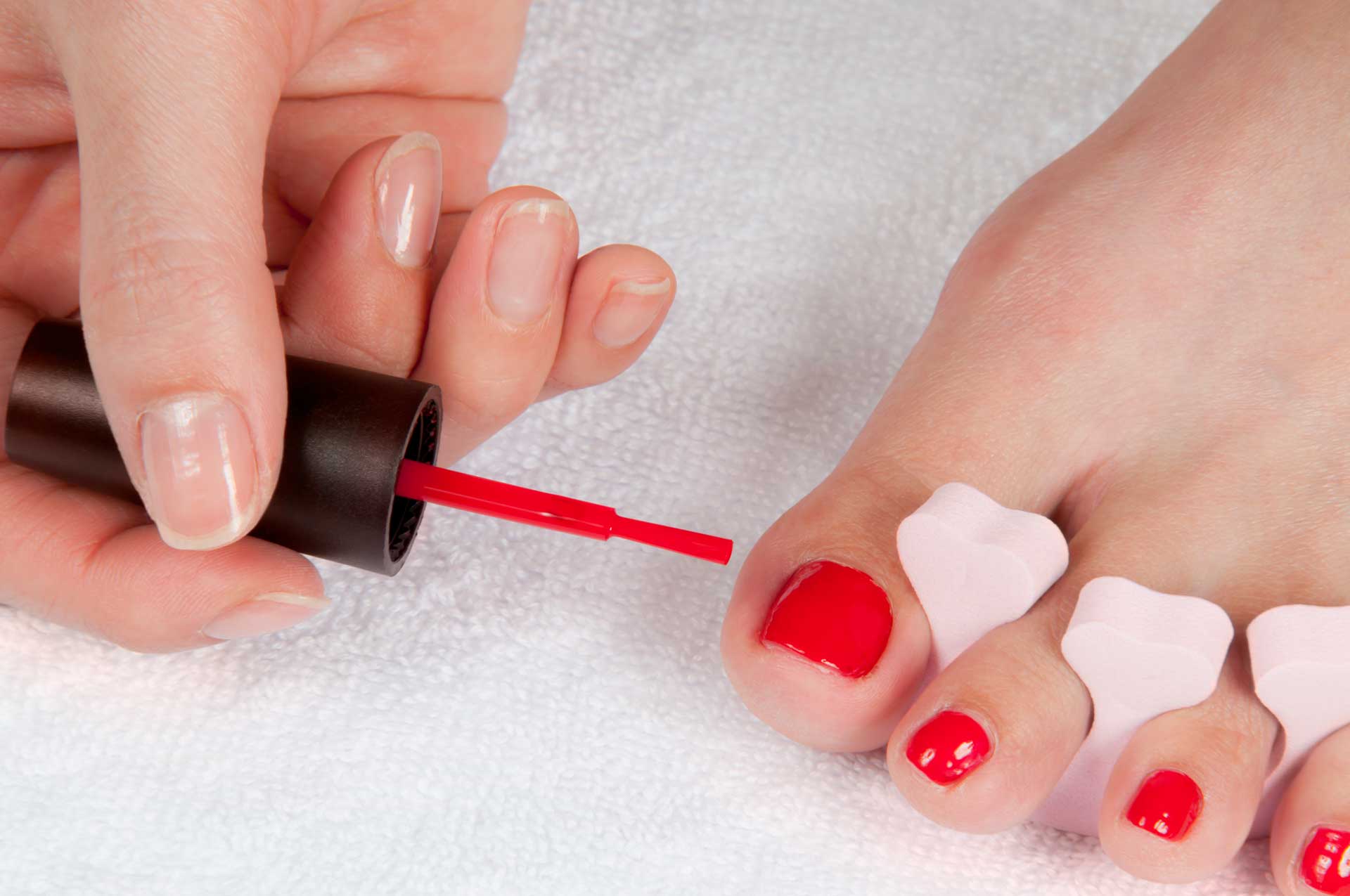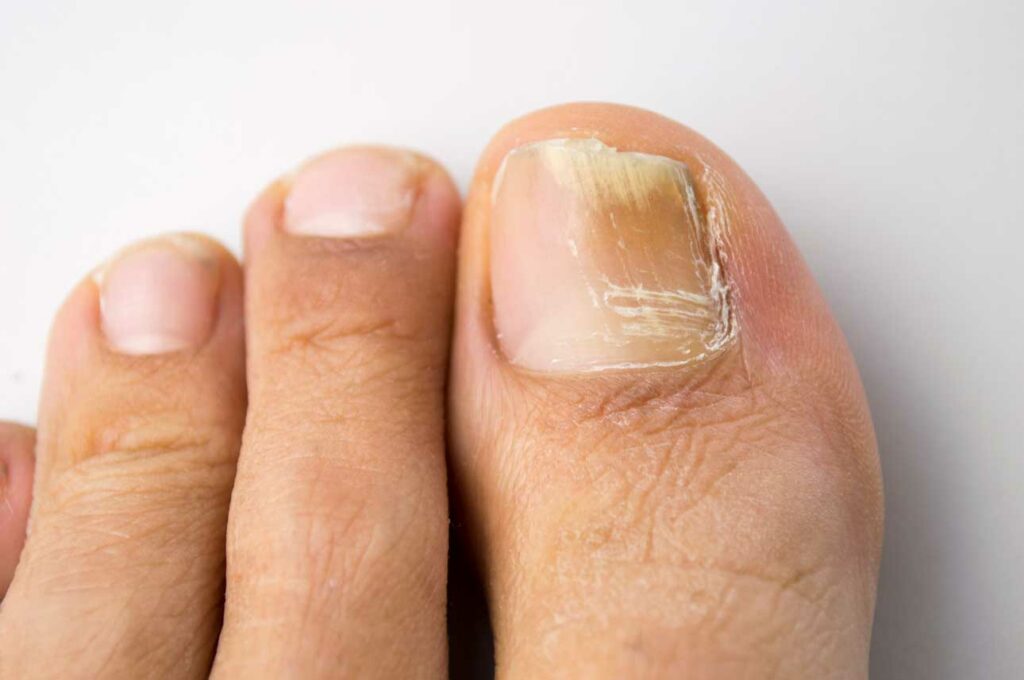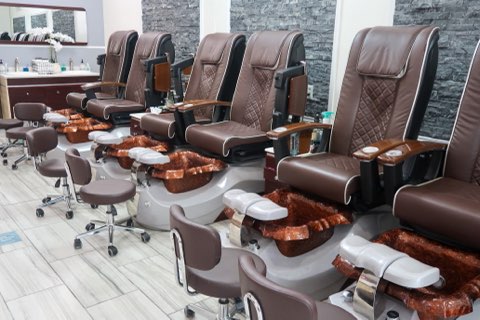Nail Salon Pedicures: The Risks and How to Avoid Them

The Risks of a Nail Salon Pedicure
For many people, visiting a nail bar for a pedicure is a common part of their self-care routine, but we feel it is time to draw some light on the significant risks that you may not be aware of in having a pedicure at the nail bar.
Look, we don’t want to generalise here, there is a huge variance in quality and infection control between each nail salon, and hopefully after reading this you will have a better understanding of the risks and will be able to judge the salons processes and whether it is a risky one.
We are podiatrists from a Sydney podiatry Clinic, Rose Bay Podiatry. We unfortunately see a concerning number of infections and injuries as a result of nail bar pedicures, prompting us to write this blog and to bring some awareness to these serious concerns and how you can better protect yourself.
As health professionals we are horrified by the infection control and lack of regulation placed on beauty salons and it unfortunately then gives all in the industry a bad name.
So if you’re someone who enjoys being pampered – keep reading!
The ‘types’ of Infections ????
One of the biggest risks of getting a pedicure at a nail salon is the potential for infection, either bacterial, fungal or viral.
Just to define this a little better;
A Bacterial infection is when bacteria enters the skin or body. Signs of a bacterial infection include pain, inflammation, redness and pus. Commonly of the feet this can be from having broken skin, being cut or an ingrown toenail. The bacteria then enters through this wound. Bacteria may be contracted from dirty surfaces, instruments, hands etc. that contact the wound
Fungal infections (of the feet) can be of the skin or nail. Pain is not usually experienced but the area can be itchy (skin). The infection is contracted from contact with fungal spores either directly from touching the infection on yours or someone elses skin/nail, or indirectly through touching surfaces or equipment that may be contaminated. Athletes foot, tinea and ringworm are all fungal infections of the skin. Fungal nail infections cause nail discolouration, sometimes lifting, thickening and a change in texture of the nail. Unclean instruments, surfaces and polishes are all common sources of infection.
Viral Infection: Simarlarly to the above infections, viral infections of the feet are contracted with contact to the virus. That is somebody else has the infection, and your skin directly contacts the infected area or indirectly by contact with a dirty surface or instrument contaminated with the virus. The most common viral infection we see on the feet is Plantar Warts (also called Verruca or Papilloma)
The Common Causes of Infections
❌ Sharing of Communal Nail Polishes ????
In short – TAKE YOUR OWN. Despite common assumed belief, infections do not ‘die’ when inside the polish bottle. Studies have tested shared polishes for fungal spores, bacteria and microorganisms and they are riddled with them. An easy way to think of it is, if someone has a fungal nail infection and then has polish on their feet, that polish bottle is now contaminated and is being used on hundreds of different nails. But this is what happens in nearly all salons. It is a massive issue. Base-coat and polish.
❌ Cutting of Cuticles and Skin Around the Nail
Ok, so the anatomy of the cuticle is a thin layer of skin that seals the junction between the base of the nail and the skin. This seal has a very important function to avoid the entry of pathogens that could cause an infection, this is its primary role. DO NOT CUT IT OFF. Pushing it back is fine, but you dont want it removed, it is important.
❌ Taking Instruments ‘Out of a Bag’ Does Not Mean they are ‘Sterile’
These bags are somewhat like a zip-lock bag, because they come out of a bag counts for nothing. To sterilise effectively to kill pathogens the tools need to be washed, dried, placed in sealed bags specialised for autoclaving. The bags are placed in a steriliser and heated to 135 degrees celsius for 10 minutes and then dried, the bags should be dated and given an identified of the load number from the autoclave so that everything is fully traceable. This process is expensive and takes time, but is what is required to be safe, and is the process legally followed by podiatrists and all health professionals who use instruments on the body (dentists, dermatologists, surgeons etc)
❌ Non-Metal Equipment: Nail Files, Toe Separators and Skin Buffers
It’s not just the clippers and instruments that need to be sterilised. Anything that is not stainless steel is not able to be sterilised. Therefor it should be SINGLE USE ONLY. Beware of shared or reused nail files, foam toe separators (very common cause of athletes foot between toes) and skin buffers/pumice stones. These things should never be shared and if they are not opening a new one for you (and then either giving it to you or throwing in the bin) they are likely re-using it on other clients. These implements easily retain exfoliated skin and nail, fungal spores and other pathogens.
❌ Foot Soaks/Spas:
Yes they may line the tub with plastic, but this is still not safe! It’s still not sterile and is gross. Especially beware of the spa systems that the water circulates through dirty pipes that are uncleanable and then pumped out again nice and warm onto your feet. Harbouring fungal spores and germs. The cleanest pedicure is a dry pedicure. Your nails (no matter how thick), do not need to be ‘softened’ to cut them, a professional (Podiatrist) will cut them perfectly fine. You are safest to ask to skip this step if you have to have a pedicure.
❌ Improper cutting technique
Improper nail cutting technique is common and can cause issues such as ingrown toenails or inflammation of the skin around the nail. Quite often “cutting down the sides” can leave a sharp edge which can become irritated and ingrown if not addressed. This easily becomes infected shortly after the pedicure has taken place.
Who SHOULD NOT be getting a Pedicure
If you have the below conditions or are pregnant, for various reasons mentioned above you should not be attending for a non-medical pedicure. Please, please see a podiatrist for a Medical Pedicure or your doctor for advice:
- Ingrown toenails!!!
- Corns
- Diabetes
- Poor blood flow
- Taking Warfarin or blood thinning medication
- Pregnant Women
So what do we suggest – Never have a Pedicure Again?
We likely won’t be! For the safest option limiting the above risks we would suggest seeking out a local podiatrist local that offers Medical Pedicures.
If you’re still wanting to get a pedicure at a nail salon, we suggest choosing your salon wisely, asking not to soak and taking your own polish and base coat. Keep an eye on the implements they are using on your skin and nails and politely ask if you are concerned. It is not worth the health risk.
What are Medical Pedicures:
Medical Pedicures are becoming increasingly available at Podiatry clinics.
They will cut, shape and buff your nails, remove hard skin, corns or callus, apply a nourishing nail oil like ‘Bondi Medi-Pedi Nail Serum‘, moisturise your skin leaving your nails and skin feeling smooth and fresh. If you want a pop of colour you can apply afterwards at home, but honestly your feet will feel and look so lovely naturally you probably won’t feel the need to.
You will receive expert care and attention and we can also help to identify and treat any other foot conditions or issues that you may be experiencing.
Unlike nail salons, Podiatrists are regulated to follow strict hygiene and sterilisation regulations to ensure all equipment is sterile and free from contamination.
In addition to providing expert care and treatment, Podiatrists focus on education and prevention. By learning more about your foot health and how to care for your feet, you can prevent future foot problems and maintain healthy feet over the long term.


Understanding the Risks of Nail Salon Pedicures
While a pedicure at a nail salon can be a relaxing and enjoyable experience, it’s crucial to be aware of the potential health risks involved. At Rose Bay Podiatry, our focus on foot health extends beyond treatment to include education on preventive care. This includes understanding the risks associated with traditional nail salon pedicures and how to make safer choices for your foot care. Here, we explore common concerns and offer professional alternatives that prioritize your health and safety.
Common Risks Associated with Nail Salon Pedicures
- Infections: The risk of fungal, bacterial, and viral infections, including athlete’s foot and nail fungus, increases if the salon does not adhere to strict sanitization practices.
- Cross-contamination: Tools that are not properly sterilized between clients can become vectors for disease transmission.
- Improper Techniques: Incorrect nail trimming and aggressive cuticle removal can lead to ingrown toenails and other nail damage.
- Chemical Exposures: Exposure to harsh chemicals found in some nail products can lead to skin irritation or allergic reactions.
The Medical Pedicure: A Safer Alternative
At Rose Bay Podiatry, we offer Medical Pedicures that combine the pampering experience of a traditional pedicure with the safety and expertise of medical care. Our Medical Pedicures are performed by qualified podiatrists in a sterile environment, ensuring the highest standards of hygiene and foot care. Benefits include:
- Sterilization: All instruments are sterilized according to medical standards, significantly reducing the risk of infection.
- Expert Care: Our podiatrists are trained to identify and treat foot conditions early, often spotting issues that a regular pedicurist might miss.
- Tailored Treatments: Each treatment is customized to the client’s specific needs, considering their medical history and foot health.
- Safe Products: We use only podiatrist-approved products that are gentle on the skin and free from harmful chemicals.
Making Informed Choices for Your Foot Health
Choosing a Medical Pedicure over a traditional nail salon pedicure is an investment in your foot health. Not only do you receive a relaxing and beautifying treatment, but you also benefit from the peace of mind that comes with knowing you are in the hands of foot care professionals. Here are some tips for those times you do choose a traditional pedicure:
- Research the Salon: Look for salons with excellent reviews, particularly regarding cleanliness and hygiene practices.
- Observe Sanitization Practices: Ensure that foot baths and tools are properly sanitized before use.
- Communicate: Discuss any foot concerns with your pedicurist and don’t hesitate to ask about their sanitization procedures.
Schedule Your Medical Pedicure Today
If you’re looking for a safe, hygienic, and professional pedicure experience, consider booking a Medical Pedicure at Rose Bay Podiatry. Our team is dedicated to providing comprehensive foot care that not only looks great but also promotes overall foot health. Contact us today to schedule your appointment and experience the difference of a Medical Pedicure.
